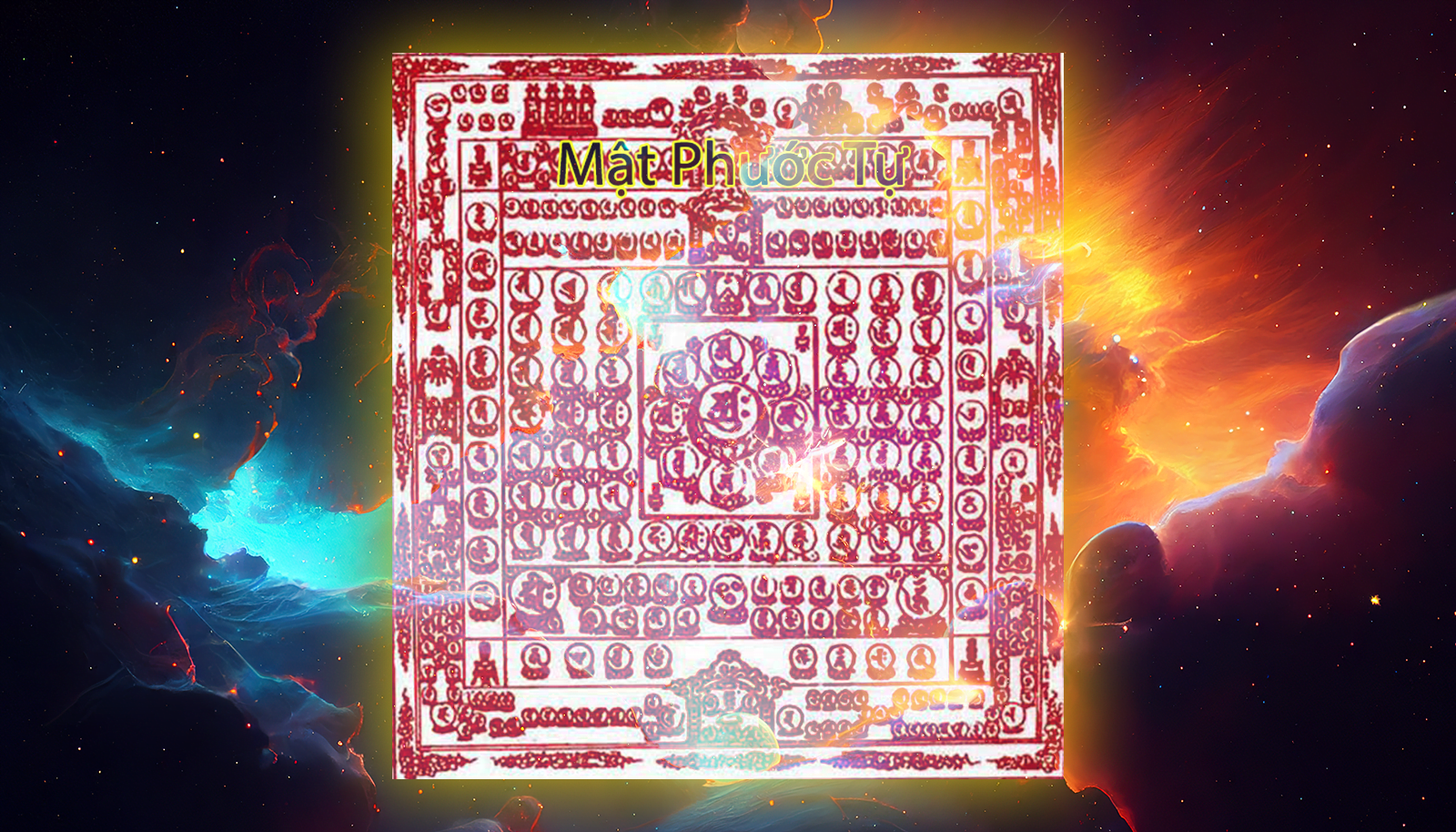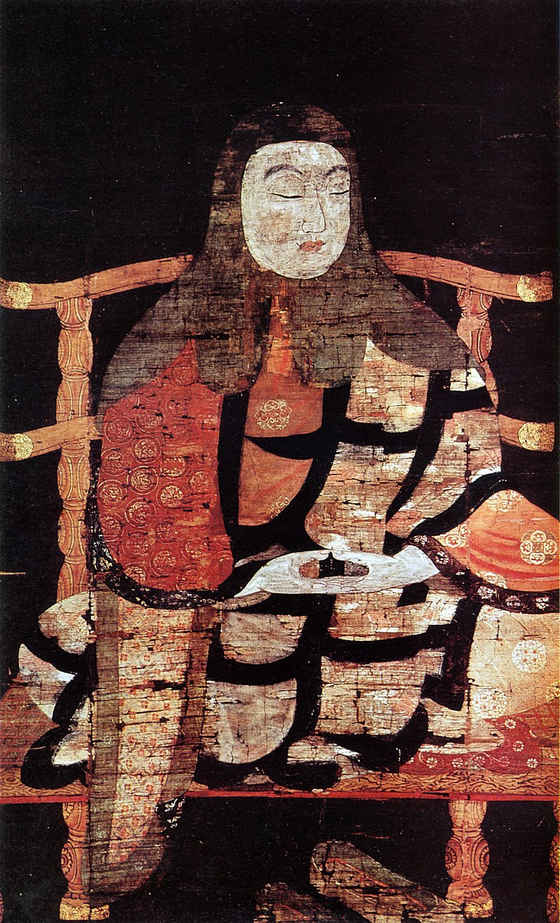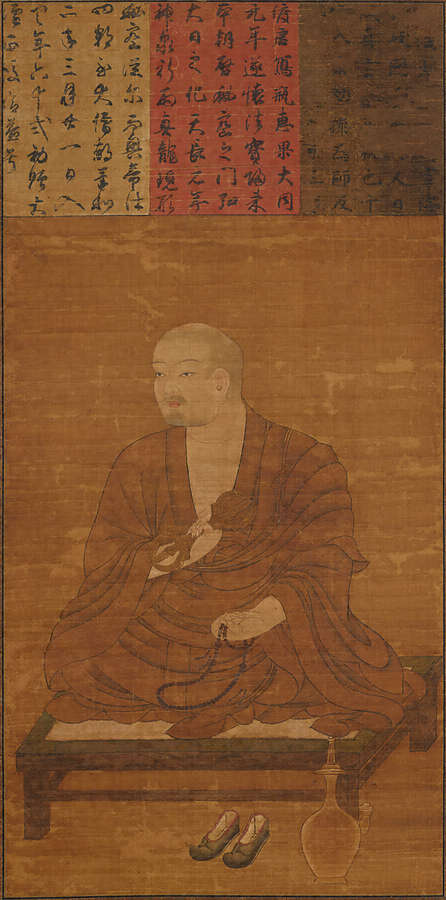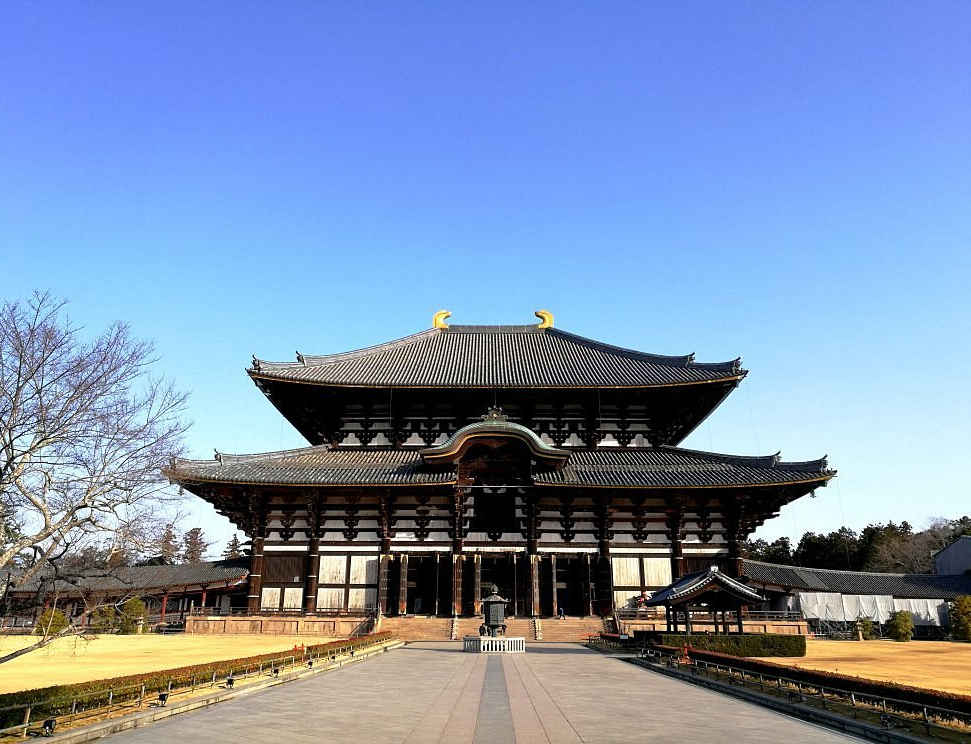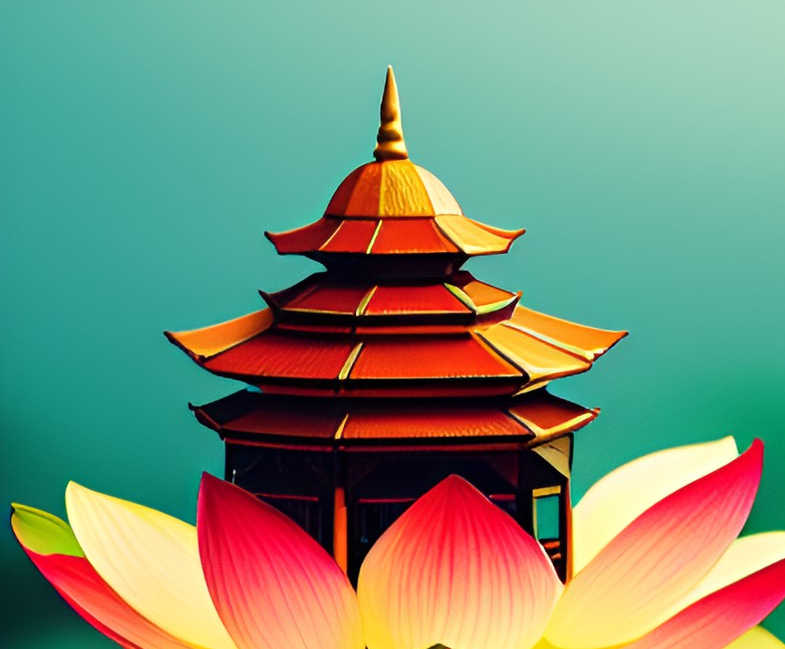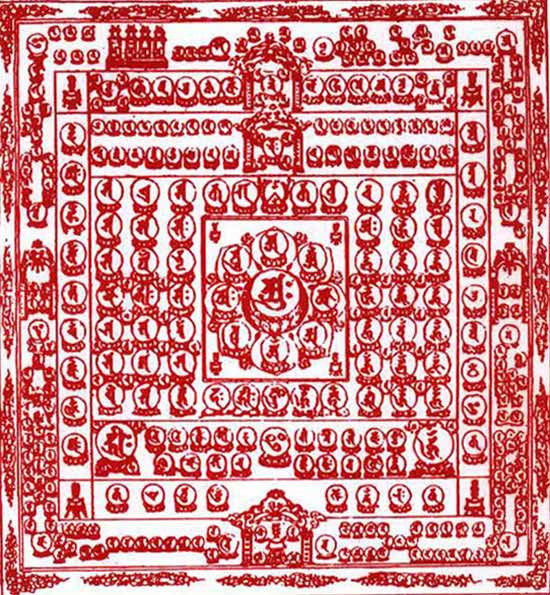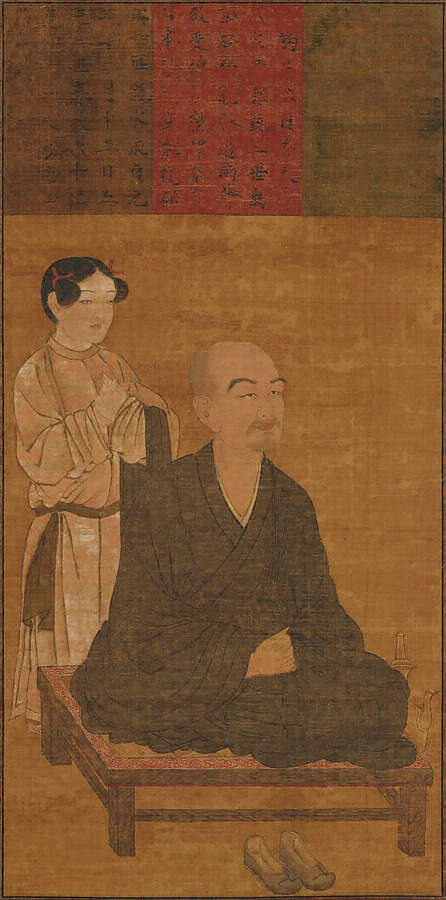Four superior Buddhist priests and others had brought the theory and practice of Buddhism to Japan. From that time, Secret Buddhism was organized and thoroughly systematized by Kukai, who was the great master Kobo at Koyosan (mountain of Koyo). Kobo was also the founder of the Shingon sect in Japan. He was a fine artist of sculpture and calligraphy. His works of literature were admired both in China and Japan. The Secret Sect, or Diamond Vehicle, might be represented by Kobo who had compiled the complete Secret Doctrine in Japan. To understand the position of the Secret Doctrine, it is necessary to sketch the civilization process brought by Buddhism to this country.
1. A. Japanese Buddhism:
Buddhism from Korea had spread to Japan in 552 or 538 AD, at the start of the Gregorian calendar, when King Kudara dedicated a Sakyamuni statue made in bronze, together with a number of scriptures and religious objects to Emperor Kim Mei. After about 50 years after the first official entry of Buddhism. Prince Shotoku Taishi became King (574-622 AD). He had built many beautiful monasteries in Nara and its vicinity. Among them was the Horyyuji monastery, which still exists today. The prince was a scholar who wrote explanations for many scriptures such as the Pundarika, Srimala, and Vimalakirti Sutras.
At that time, Buddhism had not been clearly divided into many sects as today. Six Schools of Buddhism were introduced in Japan and flourished during the Nara period. They were Abhidharma- Koram Satya-Siddhi, Hosso Shu (Fa- Siang- Tsoung), Sanronshu (San- Lun-Tsoung), and Kegonshu (Hoa-Yen- Tsoung). The schools provided a forum for learning literature, philosophy, science, religion and culture. As such, they were regarded as an endless treasure that motivated all artistic activities.
The Buddhist monasteries were managed by monks and financed by the imperial court. They served as schools, hospitals, pharmacies, orphanages and nursing homes. The growth of Buddhism in its initial stage had been nurtured with such a high cost that, by the 8th century it became a burden to the country. It was partly due to the selfishness of the privileged monks and nuns, and partly due to the importance put on trivial items of display rather than on major issues. Buddhism of Nara started to shift in another direction and soon was replaced by Buddhism of Heian (Peaceful Buddhism). At the end of the 8th century AD, King Kwammu moved his capital from Nara to Tokyo. Contrary to the old tradition, he left all monasteries, sanctuaries and shrines in Nara, and established new ones on the mountain of Hiei, south of Tokyo. The new leaders of Buddhism, Dengyodaishi and Kukai then entered the arena as the two brightest and biggest stars. Secret Buddhism began to flourish.
2. Secret Buddhism in Japan:
Two prominent people, Dengyodaishi (or Saicho) and Kukai (Kobo Kaishi) established two important schools of Buddhism. Dengyodaishi transmitted Taimisu from Ten Dai School. Kukai transmitted the doctrines of mystic ritualism from the Vajrayana School in the form of Shingon Buddhism to Toji. Both schools were not much different from each other regarding the doctrine theory. However, the Shingon sect was more popular and more special on the practical aspect of the doctrine.
On the doctrine theory, both sects had the same point of view about Sakyamuni and Mahavairocana, and about the application of the doctrine theory in Shinto Religion in Japan. In exploring the relationship of Shinto religion and Buddhism, one must thoroughly understand this point, because the vocabulary used in Shinto religion, such as Ryobu and Ichijtsu, originated from the difference of ideology in these two Secret sects.
A. Taimisu.
Dengyodaishi (767-823 AD) was the first founder of Taimisu. Visitors to Kyoto could easily recognize the mountain Hiei, the highest mountain that stood imposingly at the East of the city. That was where Dengyodaishi established Ten Dai or the Taimisu School of Buddhism. He was among the first Buddhist who had realized the dangers of city life, while many others before him enjoyed it greatly. He was not just proficient in the complicated philosophy of the Ten Dai School, but was also an excellent student of mystic rituals of the Chinese Secret doctrine and yoga techniques.
His ambition was to unify all other Buddhist sects. Vestiges of the new sects of Buddhism in the time of Kamakura could be found on mount Hiei, Dengyodaishi’s headquarters. The capital was beside the mountain, yet Dengyodaishi seemed to be separated from the world. The older sects of the Nara Dynasty were rivals to the new leaders, both for sentimental reasons and for the difference in the principles. Dengyodaishi at the Ten Dai School focused on the way of the “One Vehicle” from the Dharma Flower Sutra, while the older conservative sects followed the direction of Yogacara. They disagreed on the merging of the Shravaka, Prateyka-Buddha, and the Bodhisattva vehicles into the One Vehicle doctrine of Dharma Flower Sutra.
Kukai was considered a dazzling genius with a versatile talent among great men. He was an erudite scholar, a philosopher, an ascetic monk, and a skilled calligraphy artist. He was known to possess many supernatural powers. He had successfully fought off Demons when he was only a Sadi (beginning level of yoga practice). At Murato, he had chased away fierce Dragons that came out from the water by reciting a mantra. It was said that he took the star’s light in his mouth and spat out on them. On another occasion, while he was in deep meditation in a hut he himself had built, evil spirits appeared and were rendered powerless when he drew a magic circle and sat in the middle of it. He was known to have created many effective magical circles and yantras from his mind’s power. Kukai’s main purpose was to research the Mahavairocana Sutra and Vajrasekhara Sutras, the two important compositions of Shingon sect. In China, he was the disciple of Hui Guo, the 8th patriarch of the Shingon sect and the 1st patriarch of the Secret Sect in Japan. When he came back to Japan, he chose Koyasan to be the capital for the Shingon sect in Japan. He liked having a Buddhist monastery in the mountains, but he still kept a close relationship with the outside world. The Toji monastery in the south of Kyoto was the place that recorded his footsteps whenever he was in the capital. Koyasan, located in a remote area of a small town was harder to reach than Dengyodaishi’s Mt. Hiei. However, it attracted large numbers of pilgrims every year.
In 804 AD, he went to China to be initiated and became the next link in the lineage of founders that followed Mahavairocana Buddha. When he first met with Hui Guo, the 7th founder of the Shingon sect, the latter told him: “I have long known you would come. For such a long time I have waited for you!” Four months later, Kukai received the Abhisekha ceremony from Hui Guo. Hui Guo said: “Mahavairocana had transmitted this to Vajrapani.
Vajrapani had transmitted to Nagarjuna, and so on down to me. I noticed that you deserve to receive the Dharma, so I transmit it to you so you can save the people in your country.” In the year 806 AD, Kukai went back to Japan. With the encouragement of the King, he established a monastery at Koyasan and preached the Shingon doctrine. He was very active in preaching and in helping people and became eminently popular. In 835 AD, knowing that his religious mission had been fulfilled, Kukai sat in meditation and passed away.
In the year 806 AD, Kukai went back to Japan. With the encouragement of the King, he established a monastery at Koyasan and preached the Shingon doctrine. He was very active in preaching and in helping people and became eminently popular. In 835 AD, knowing that his religious mission had been fulfilled, Kukai sat in meditation and passed away.
Related Post
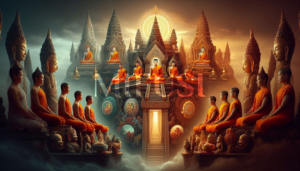
Story 4 – Chimdada’s quest for Magic
Story 4 - Chimdada's quest for Magic Câu chuyện số 4 - Chimdada cầu đạo by ThầyGià - 12 November...

Chapter III: II – Lecture on Dharanis from various Sutras in Secret Buddhism
Apart from the fundamental Mahavairocana and Vajrasekhara Sutras, Buddhist masters who compiled the Tripitaka (three 'baskets' of Sutras on: Doctrine,...
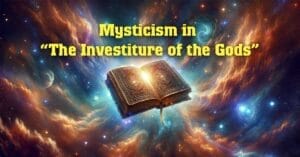
Foreword
Foreword: This book, "Mysticism in The Investiture of the Gods" is a translation from the original Vietnamese text. The Chinese...

Chapter II: I – BRIEF HISTORY OF SECRET BUDDHISM IN TIBET
I. BRIEF HISTORY OF SECRET BUDDHISM IN TIBET The people in Tibet did not have a serious religion before the...

JIANG ZIYA LEAVES THE MOUNTAIN
The Supreme Ruler has assigned Grand Master Yuan Shi Tian Zun the responsibility of assessing disciples' virtues and vices, and...
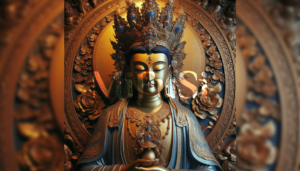
Kwan Shih Yin – compassion Dharani
Kwan Shih Yin - compassion Dharani I shared this picture simply because I find it beautiful, not because of the...
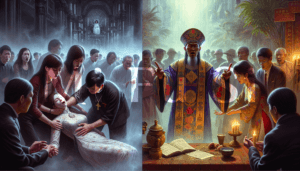
MY AUNT’S SPIRIT POSSESSION
MY AUNT'S SPIRIT POSSESSION (Quỷ nhập- Câu chuyện ôn tập lời dạy của Tổ, Thầy by Bạch Hạc on Wed...
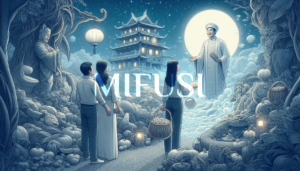
Story 2 – Deity Nguyen Trung Truc – factual story
Story 2 - Deity Nguyen Trung Truc - factual story Câu chuyện số 2 - Thần Nguyễn Trung Trực by...
